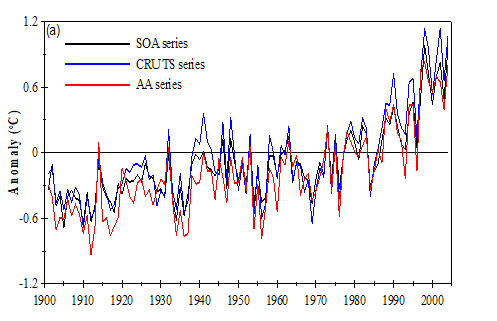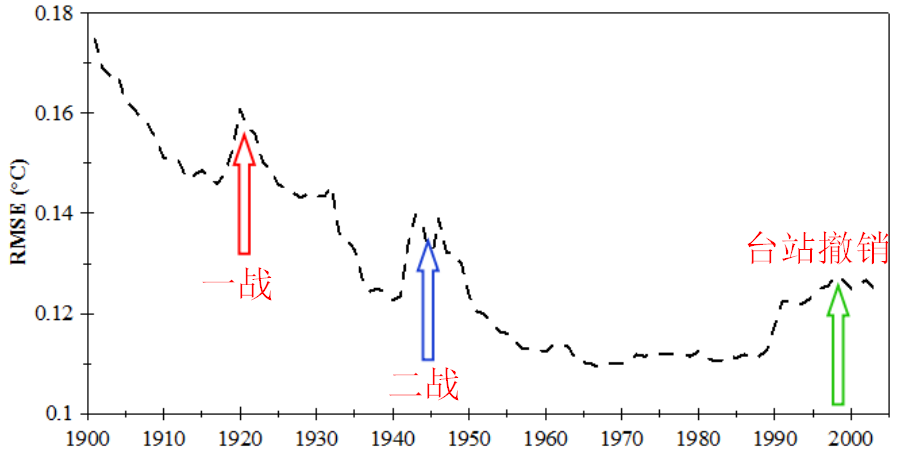The school of atmospheric science has made new progress in the field of optimal estimation of air temperature series in east Asia over the past century
On July 26, the research group of associate professor huawy from the school of atmospheric science of our university published a research paper titled “Optimal average annual mean air temperature for East Asia since 1901” in Theoretical and Applied Climatology, an international journal related to climate change. Based on the severe missing meteorological data and the optimal average method, the paper estimates the regional average temperature series of east Asia in the last century.

Figure 1. Regional mean temperature series at the 100-year scale in east Asia
Note1: optimal mean sequence (black), reference true sequence (blue) and arithmetic mean sequence (red)
Regional average temperature series of estimation is one of the important scientific problems of research in the field of climate change, it is the basis of accurate temperature data, high spatial and temporal resolution of the meteorological observation network and low efficient error of the average method. Because of the limited layout of meteorological stations and unreasonable spatial layout, it is difficult to obtain the continuous observation data in space and time, and the observation data itself has various quality problems; At the same time, more than previous studies using regional arithmetic average or weighted average method, the result and the real value has certain error, cause even though on the scale of one hundred, a consensus has emerged among heating, but to observe the sparse region of before the middle of the 20th century up to now, its temperature range and regional average temperature series of accurate estimate there are still some uncertainty.

Figure 2. The error range of regional mean temperature in the 100-year scale of east Asia
Note2: the three peak errors were caused by the two world wars and the station revocation since 1990s.
Due to the complex topography and climate in east Asia, the existing observation networks were mostly built after 1950s, before which meteorological observation was almost blank. Therefore, further studies are needed to assess the accuracy of temperature sequences in east Asia over the past century, especially before the 1950s. The main purpose of the research group of associate professor of atmospheric sciences, associate professor huawy, is to use the historical temperature data and error data of Hadley center in the UK to calculate the Optimal value of east Asian region average temperature series from 1901 to present by using EOF based-Optimal Averaging. The study shows that, compared with the arithmetic mean method, the optimal mean significantly reduces the mean square error between the estimated value and the real value, especially in the first half of the 20th century. In addition, when the error of temperature observation data changes little, it has little influence on the accuracy of the regional average sequence, but when the error is large, the regional average sequence will be significantly affected. The research results are of great significance for studying climate change in east Asia over the past century.
